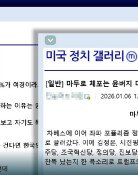[Op-Ed] Plunging Household Savings Rate
[Op-Ed] Plunging Household Savings Rate
Posted March. 25, 2009 08:58,
Koreas household savings rate, or the percentage of money saved out of disposable income excluding tax and interest payments, was around eight percent in 1975, when the government began compiling the statistic, and steadily grew thereafter. Even when the Asian currency crisis hit Korea in 1998, the rate soared to 23.2 percent. Before the 1990s, famous scholars even conducted studies on why Koreans saved so much. Since a high savings rate was considered a driver of Koreas rapidly growing economy, the government, media and people have followed the rate whenever it changes and when the rate is compared to those of other nations.
After falling below 10 percent in 2000, Koreas household savings rate hovered around four percent until last year, when it fell under two percent. That means growth of disposable income has failed to keep up with growing consumption. Many households have less disposable income due to the growing burden of interest and pension payments. At the same time, their earning and spending patterns have greatly changed over the past decade mostly due to skyrocketing property prices and snowballing private education costs, which reached a combined 30 trillion won (21 billion U.S. dollars) last year. Korean society is no longer one that encourages frugality and savings. Instead, people are borrowing money to spend more. E-mail and text messages are flooded with advertisements urging users to take on more debt.
Robust spending contributes to boosting the economy. That is not the case in Korea, however. Domestic consumption has grown so rapidly that families save little or no disposable income. Worse household debts have also snowballed. Lower-income households are unable to cut spending despite declining income, facing bigger deficits and teetering on the verge of bankruptcy. On the other hand, corporations have accumulated a large amount of internal reserves since the Asian currency crisis, helping the nations aggregate savings rate, or the combined savings rate of the government, business and individuals, to remain above 30 percent.
Germany, France, Austria and Spain have been less affected by the global financial crisis since their household savings rate has surpassed 10 percent. Koreans need to return to their old habit of cutting spending and saving if they want to survive the crisis. For its part, the Korean government should introduce effective measures such as the Individual Development Accounts of the United States designed to assist low income people on their path toward asset ownership, or the Child Trust Fund of Britain, a savings account for all newborn babies that matures on their 18th birthday and helps account owners to continue their studies and make a living. Measures are also needed to provide incentives for low-income people who save.
Editorial Writer Hong Kwon-hee (konihong@donga.com)



![[속보]내란특검 “尹, 전두환 세력보다 엄정하게 단죄해야”](https://dimg.donga.com/c/138/175/90/1/wps/NEWS/IMAGE/2026/01/13/133151025.3.jpg)
![[속보]윤석열 ‘내란 우두머리 혐의’ 사형 구형…내달 1심 선고](https://dimg.donga.com/c/138/175/90/1/wps/NEWS/IMAGE/2026/01/13/133151126.3.jpg)


